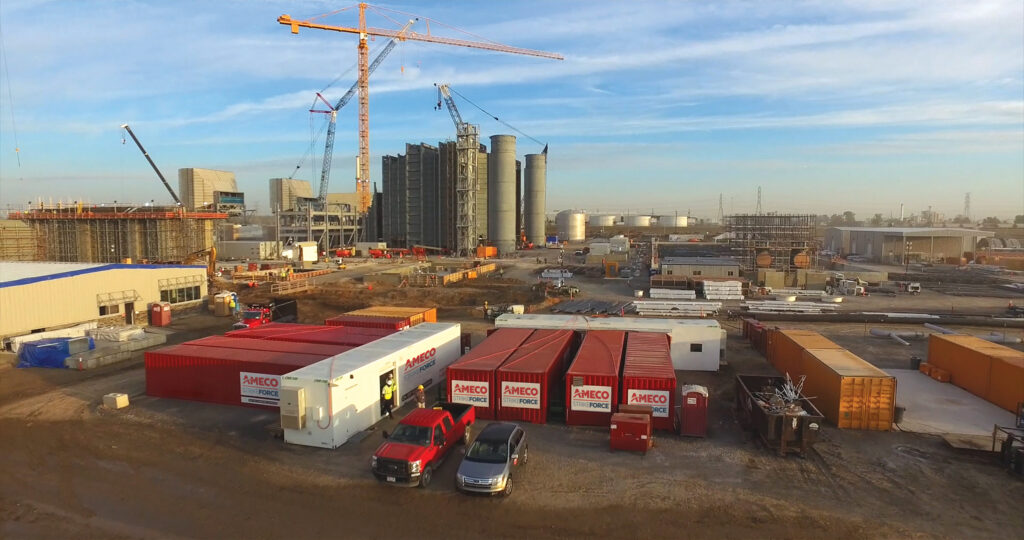Find opportunities in the challenges of meeting the data center power need
By Clayton Kale
clayton.kale@ameco.com
There’s a game I like to play called Challenges and Opportunities. It’s a helpful way to better understand a problem, and it helps identify potential second and third order effects.
The rules are simple, when exploring a topic, assign an idea the labels “Challenge” or “Opportunity.” If you’re unsure where an idea falls, then you “Better Learn More.”
Recently I’ve been playing Challenges and Opportunities with the idea of data centers. AMECO is tracking about 300 proposed data centers (though that number changes frequently as new centers are proposed). That is a classic Opportunity for AMECO, which provides construction indirect services to large construction projects. Put on a map, these data centers are spread throughout the US with clusters in Texas, the Atlantic coastal states, the pacific northwest, and the southwest. These are all Opportunities for the communities these are being built in.
In addition, there are “hyperscale” data centers. These are the data centers from big players like Google. Amazon, and Microsoft that are processing AI research and corporate cloud computing. AMECO is tracking more than 40 planned hyperscale data centers. Again: Opportunities.
But here’s where we run into a Better Learn More: How much power will it take to run these datacenters? In short, a lot. A McKinsey report visualizes hyperscale data center power usage like this: A single hyperscale datacenter’s power usage is equivalent to the power usage of about 80,000 homes. Talk about a Challenge.
That’s a challenge because peak demand is expected to grow to by 38GW by 2028, putting a strain on the current power grid. To meet this growing demand, new generation capacity will have to come online — quickly! One thing I’ve learned about Challenges is that they are often Opportunities in disguise. The Opportunity in front of us is an opportunity to strengthen and modernize the power grid. Green solutions like solar and wind add capacity, but unfortunately, they d
on’t provide the steady state energy to the grid that’s needed to sustain 24/7 data centers (not to mention millions of Americans charging their EVs overnight).
There is promise in new nuclear technologies (Opportunity!), but even nuclear optimists don’t see small modular reactors being a viable option until the 2030s at the earliest (Challenge!).
To fill the gigawatt gap quickly and economically while also keeping the promise of reducing greenhouse gas emissions, we are going to see an increase in natural gas power production. We’re already seeing a significant number of proposed simple cycle and combined cycle plants (AMECO is tracking about 90 potential gas plants or unit additions) across North America. This is an Opportunity for th

e industrial construction industry, but there are some serious Challenges that come with it including a limited skilled labor pool and increased demand for rental equipment and construction supplies.
The constructors who come out on top of this gas power construction boom will be the ones that find every opportunity to increase efficiency and budget certainty. Construction indirect services are often overlooked or treated as an afterthought in project planning process. That can be a costly mistake. Working with an integrated partner like AMECO for provisioning and executing sitewide services can improve productivity sitewide as well as lower overall costs of a project.
Traditionally, construction projects have been plagued by a siloed approach with parties working independently until their specific phase arrives. However, we have found that when AMECO is engaged early by owners, EPCs, or CMs to plan and manage sitewide indirect services, construction efficiencies can be unlocked. In execution, this results in scaffolding erected where it needs to be when it needs to be, fewer pieces of equipment on rent, streamlined processes, and ultimately lower costs. It also leads to increased craft productivity. By having the correct resources onsite exactly when they are needed, wasted time is eliminated. And that leads to an improved schedule.
Now that’s what finding an Opportunity in a Challenge is all about.
A version of this article appeared in the Jan-Feb 2025 issue of BIC Magazine.
MORE
- Katie Linden, CCO, Shares Insights on AMECO’s Integrated Site Services
- Early Collaboration in Construction: The Secret Weapon of Successful Projects
- Defining Site Services
- How To: Build Cost Certainty into Your Tool Program
